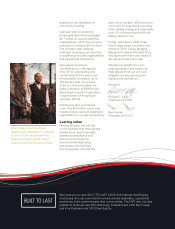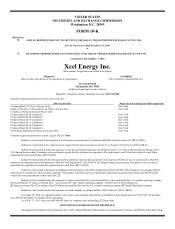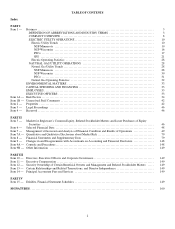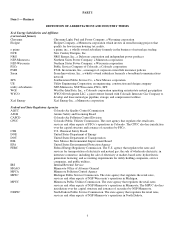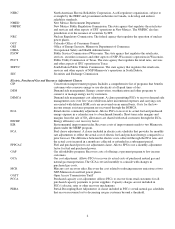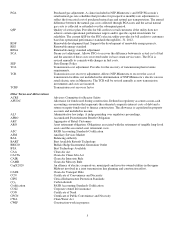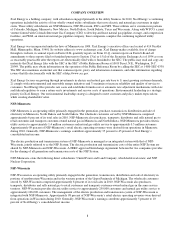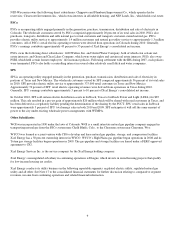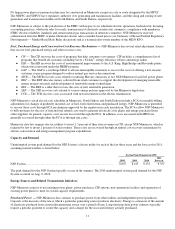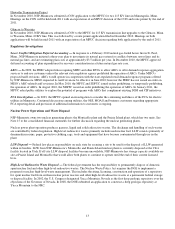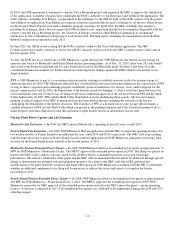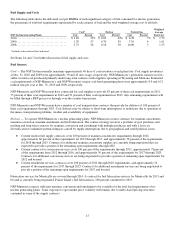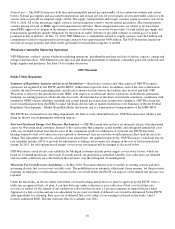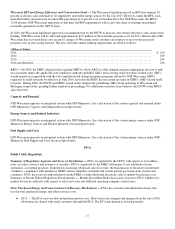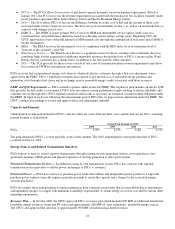Xcel Energy 2010 Annual Report Download - page 20
Download and view the complete annual report
Please find page 20 of the 2010 Xcel Energy annual report below. You can navigate through the pages in the report by either clicking on the pages listed below, or by using the keyword search tool below to find specific information within the annual report.10
ELECTRIC UTILITY OPERATIONS
Electric Utility Trends
Overview
Environmental Regulations, Climate Change and Clean Energy — Electric utilities are subject to a significant array of
environmental regulations. Further, there are significant future environmental regulations under consideration to encourage the
use of clean energy technologies and regulate emissions of GHGs to address climate change.
While environmental regulations, climate change and clean energy continue to evolve, Xcel Energy has undertaken a number of
initiatives to meet current and prepare for potential future regulations, reduce GHG emissions and respond to state renewable and
energy efficiency goals. Although the impact of these policies on Xcel Energy will depend on the specifics of state and federal
policies, legislation, and regulation, we believe that, based on prior state commission practice, we would be granted the authority
to recover the cost of these initiatives through rates.
Additional information regarding climate change and clean energy is presented in the Management’s Discussion and Analysis
section.
Utility Competition — The FERC has continued its efforts to promote competitive wholesale markets through open access
transmission and other means. As a consequence, Xcel Energy’s utility subsidiaries and their wholesale customers can purchase
generation resources from competing wholesale suppliers and use the transmission systems of the utility subsidiaries on a
comparable basis to the utility subsidiaries’ to serve their native load.
Transmission — In June 2010, the FERC issued a NOPR that would eliminate any preferential right at the federal level for an
incumbent transmission provider to construct new transmission facilities in its service territory, referred to as a ROFR. The NOPR
is pending FERC action. Irrespective of the NOPR, the utility subsidiaries are pursuing several new transmission facility projects.
The FERC approved the open access transmission planning processes for the Xcel Energy operating companies and the RTOs
serving the NSP-Minnesota, NSP-Wisconsin and SPS systems (MISO and SPP, respectively).
In addition to utility-sponsored transmission expansion, several large “overlay” transmission projects have been proposed to
construct 765 KV transmission facilities through the service areas of the utility subsidiaries. Xcel Energy is participating in
certain overlay project evaluations to ensure that any projects proposed are the most cost effective options. It is not certain if or
when specific overlay projects may be constructed and placed in service.
Alternative Energy Options — Xcel Energy’s industrial and large commercial customers have the ability to own or operate
facilities to generate their own electricity. In addition, customers may have the option of substituting other fuels, such as natural
gas, steam or chilled water for heating, cooling and manufacturing purposes, or the option of relocating their facilities to a lower
cost region. While each of Xcel Energy’s utility subsidiaries faces these challenges, their rates are competitive with currently
available alternatives. In December 2010, NSP-Wisconsin’s two largest wholesale customers, the cities of Rice Lake, Wis. and
Medford, Wis., each issued a notice canceling their wholesale power contracts with NSP-Wisconsin. The two cities will begin
purchasing power from an alternate supplier. Medford will terminate service at the end of 2011, and Rice Lake will terminate
service at the end of 2012. In 2009, these two customers represented over half of NSP-Wisconsin’s wholesale load and revenue,
and approximately 3 percent of NSP-Wisconsin’s total electric operating revenue.
NSP-Minnesota
Public Utility Regulation
Summary of Regulatory Agencies and Areas of Jurisdiction — Retail rates, services and other aspects of NSP-Minnesota’s
operations are regulated by the MPUC, the NDPSC and the SDPUC within their respective states. The MPUC also has regulatory
authority over security issuances, property transfers, mergers and transactions between NSP-Minnesota and its affiliates. In
addition, the MPUC reviews and approves NSP-Minnesota’s electric resource plans for meeting customers’ future energy needs.
The MPUC also certifies the need for generating plants greater than 50 MW and transmission lines greater than 100 KV that will
be located within the state.


